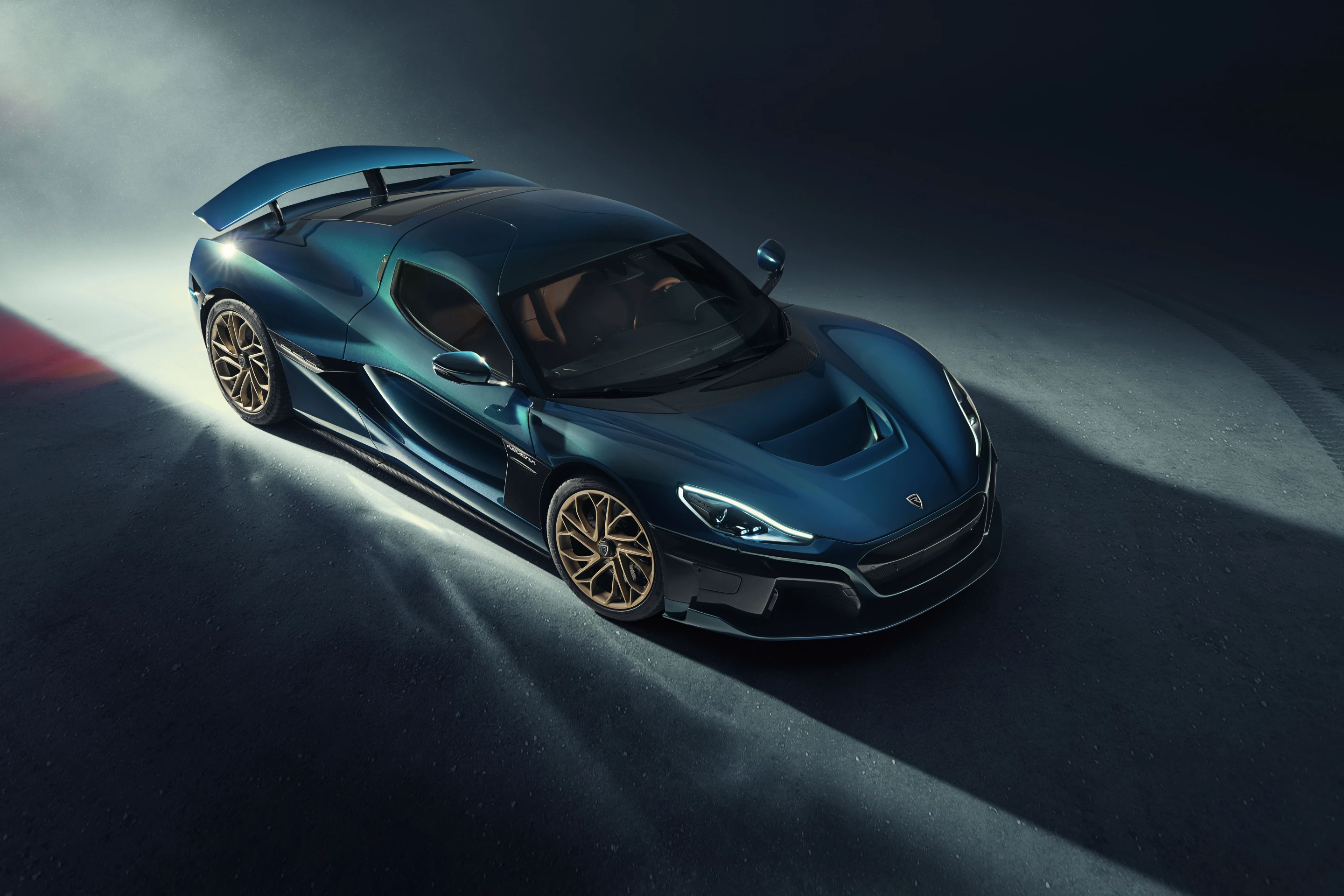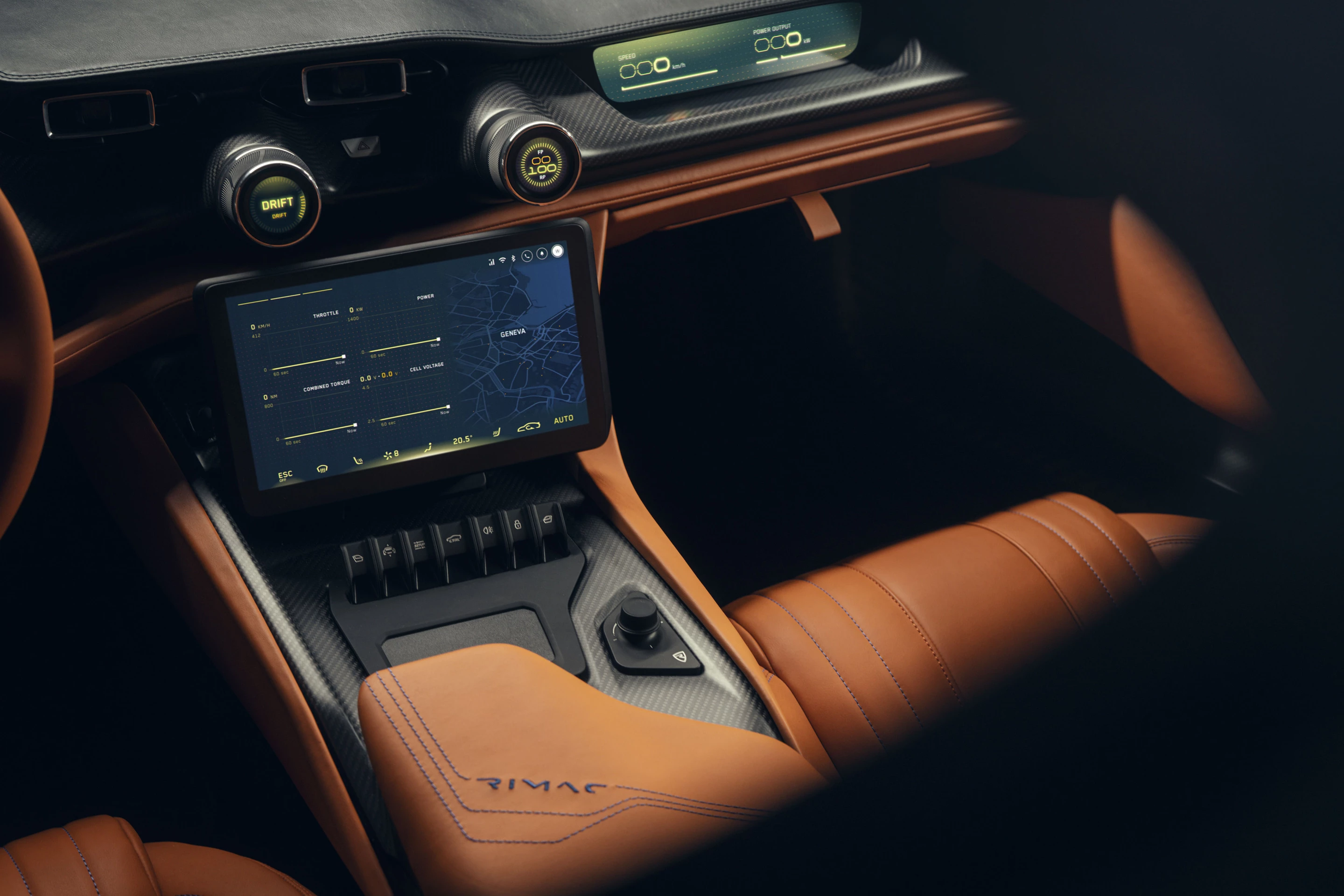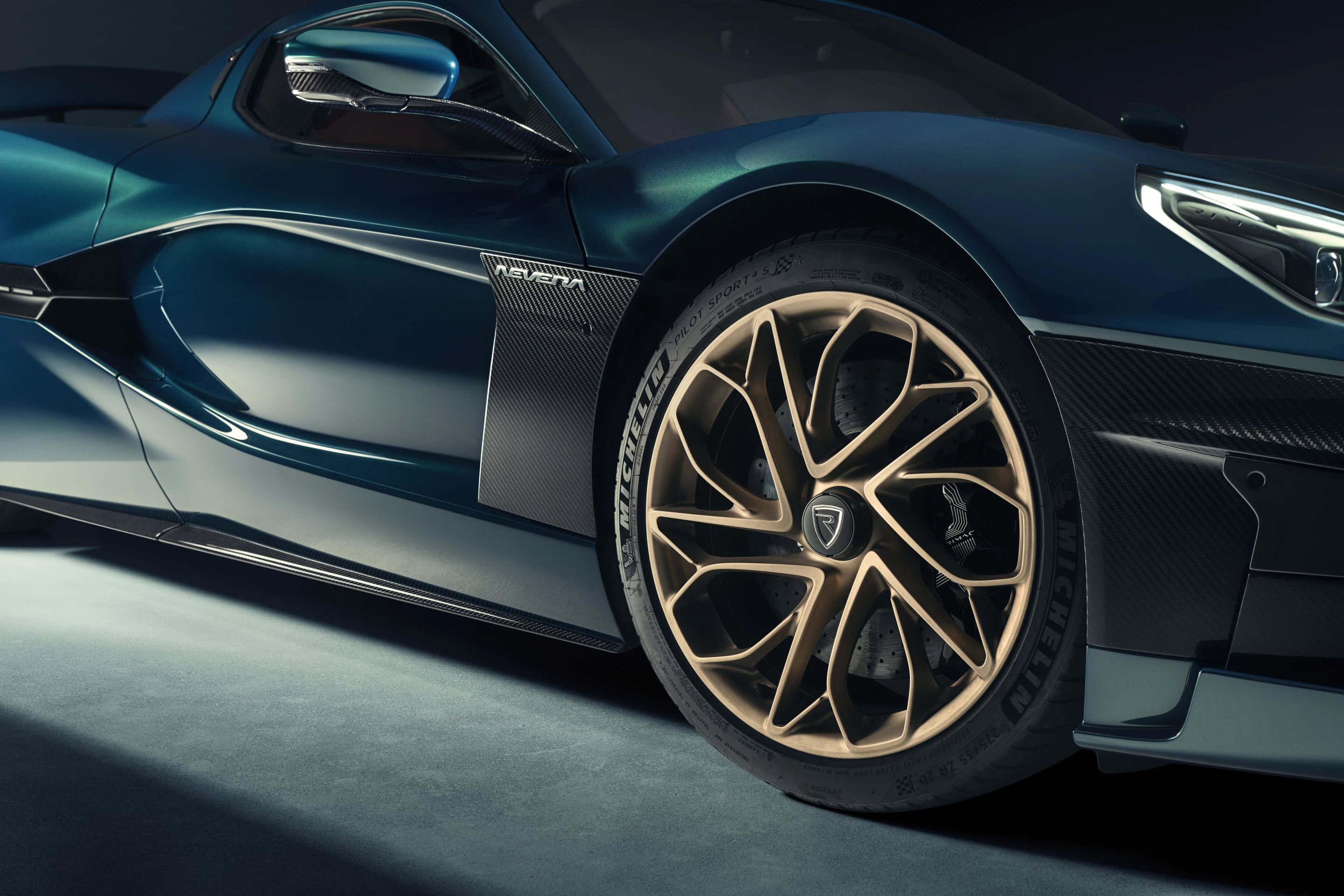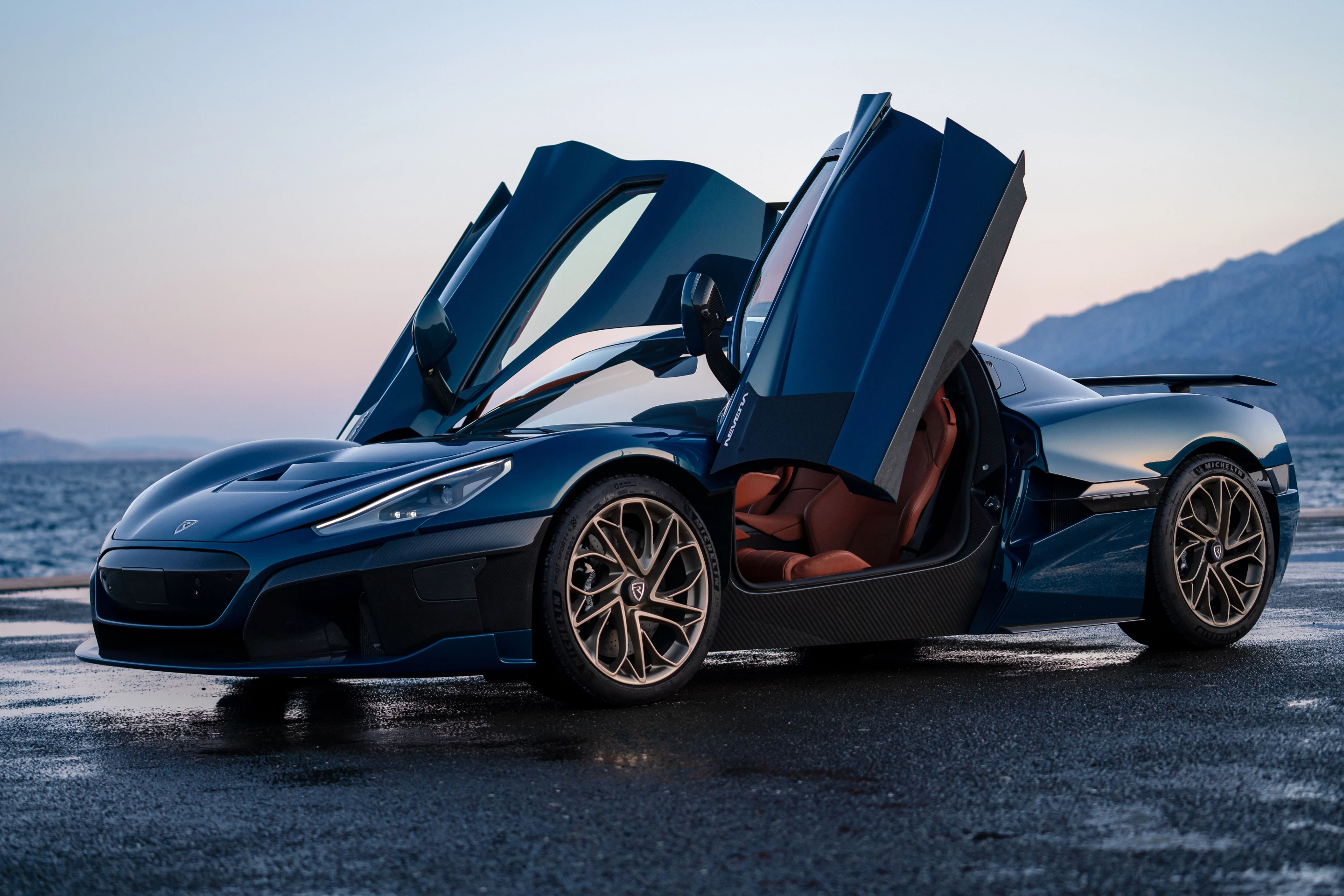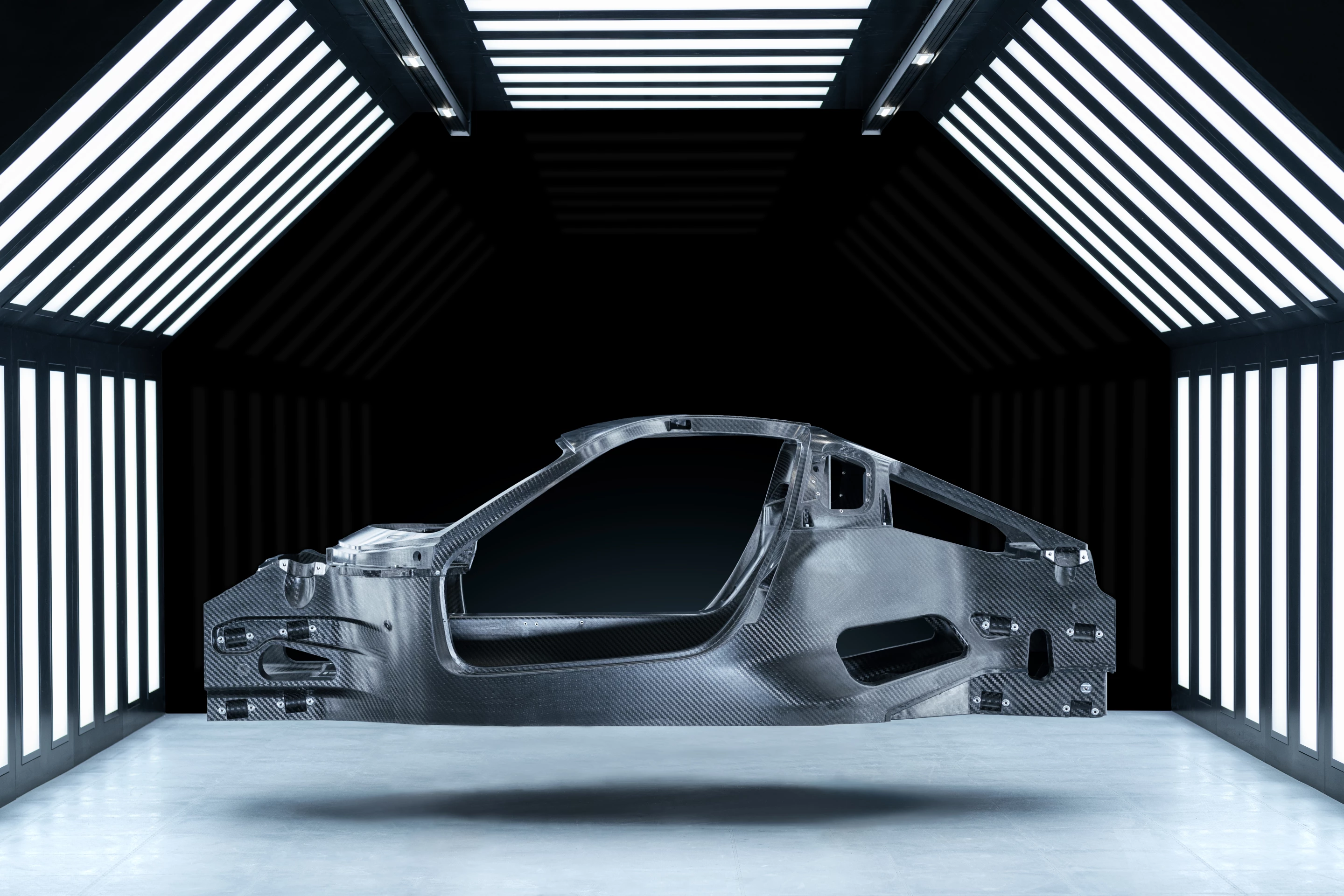Rimac is leaving behind the "C_Two" pre-production moniker and charging forward with the production-ready Nevera, a next-level electric hypercar that makes us ask, do we really want to go that fast? Rimac's latest battery-wired endeavor rockets drivers from 0 to 60 mph in a bowel-loosening 1.85 seconds before flirting with world-record levels of pure, unfiltered speed. The high-tech wonder-car with seven-figure price tag also comes stuffed bumper to bumper with the latest tech, including AI-powered driver-performance assistance, steer-by-wire and second-gen torque vectoring.
Rimac has finally ditched the eyesore Concept_One/Two naming structure for a model name that befits a €2-million electric hypercar. The company explains that "Nevera" comes from the thunderous, high-voltage world of meteorology, a colloquialism that references a sudden and unexpected Mediterranean storm ripping across the Adriatic Sea off the Croatian coast. It's not hard to see how that name fits like a glove around a bleeding-edge megacar built to rip across asphalt in a way human drivers may or may not be prepared for.
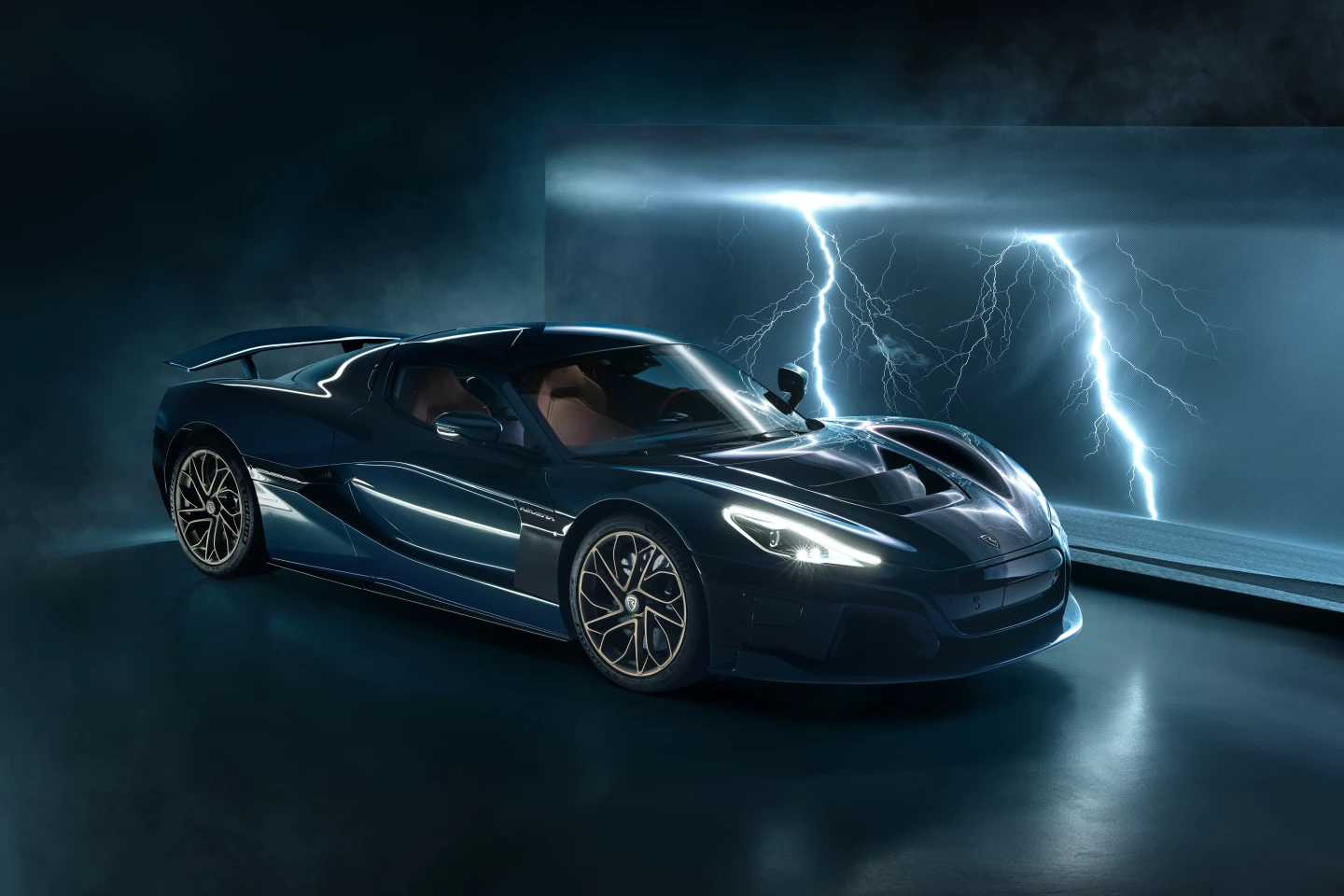
"This is it. This is the car I had in mind when I embarked on the ‘impossible’ journey 10 years ago," Rimac founder and CEO Mate Rimac proclaims. "When we first revealed the C_Two, we set our targets extremely high. There was nothing else that could even come close to matching the car’s cutting-edge electric powertrain and extreme performance. But for us, that was only the starting point."
Many of the headline-grabbing specs carry over from the 2018 C_Two concept car, starting with the 1,914 horsepower developed by way of four bespoke permanent-magnet motors hung toward the corners of the carbon fiber monocoque. According to Rimac, the production powertrain can run at high power for longer periods of time than the original C_Two drive owing to improvements in battery cooling. The 1,741 lb-ft (2,360 Nm) that pens in next to the horsepower figure is a little higher than the original 1,696 lb-ft (2,299 Nm) estimate that came out of the 2018 Geneva Motor Show.
No question such a quad-motor powertrain will deliver world record-grade specs, and the Nevera starts its record push right out of the gate with a 1.85-second 0-60 mph (96.5 km/h) sprint, followed in short order by a 1.97-second 0-62 mph (100 km/h), 4.3-second 0-100 mph (161 km/h) and 9.3-second 0-186 mph (300 km/h). That last figure represents 2.5 seconds off Rimac's initial target.

As for the quarter-mile, the Nevera boasts a scorching 8.6-second estimate that could put it at the very top of the production car world record list. And unlike the many electric cars that see their lightning-quick acceleration fade into modest overall speed, the Nevera keeps its speedometer twitching all the way up to 258 mph (415 km/h), higher than any previous electric car and inching eerily close to the world's fastest ICE production hypercars.
Discerning Nevera buyers won't be dropping millions of dollars to merely stomp the accelerator over and over and clock acceleration sprints, so Rimac throws in a pile of tech to help them throw the Nevera around twisting racetrack and undulating coastal road. That effort starts with the Rimac All-Wheel Torque Vectoring 2 (R-AWTV 2) system, which replaces traditional electronic stability and traction control and calibrates torque to each individual wheel to optimize stability and handling throughout the vast range of conditions and objectives the car will find itself subjected to. Drivers select from seven different modes to fine-tune torque distribution, with sport, drift, range, comfort and track serving as the primary modes augmented by two customizable modes.
"Depending on the driving mode selected, the R-AWTV 2 technology can enable the Nevera to be drifted sideways or provide optimum levels of all-wheel-drive grip, traction and safety – no matter how challenging the road and weather conditions," explains Rimac test/development driver Miroslav Zrnčević.

After previewing the C_Two, Rimac put serious resources toward refining the aerodynamics package, starting with modifications to the bodywork, diffusers and intakes that result in a 34 percent improvement in aero efficiency as compared to the early C_Two prototypes. Algorithm-driven active aero elements like the rear wing, rear diffuser, front hood profile and underbody flap further optimize the aero profile to the current driving conditions.
Underneath that active bodywork, the double-wishbone suspension system does its part to boost the Nevera's handling via electronically controlled dampers and ride height adjustment. The car also uses an adaptable steer-by-wire system.
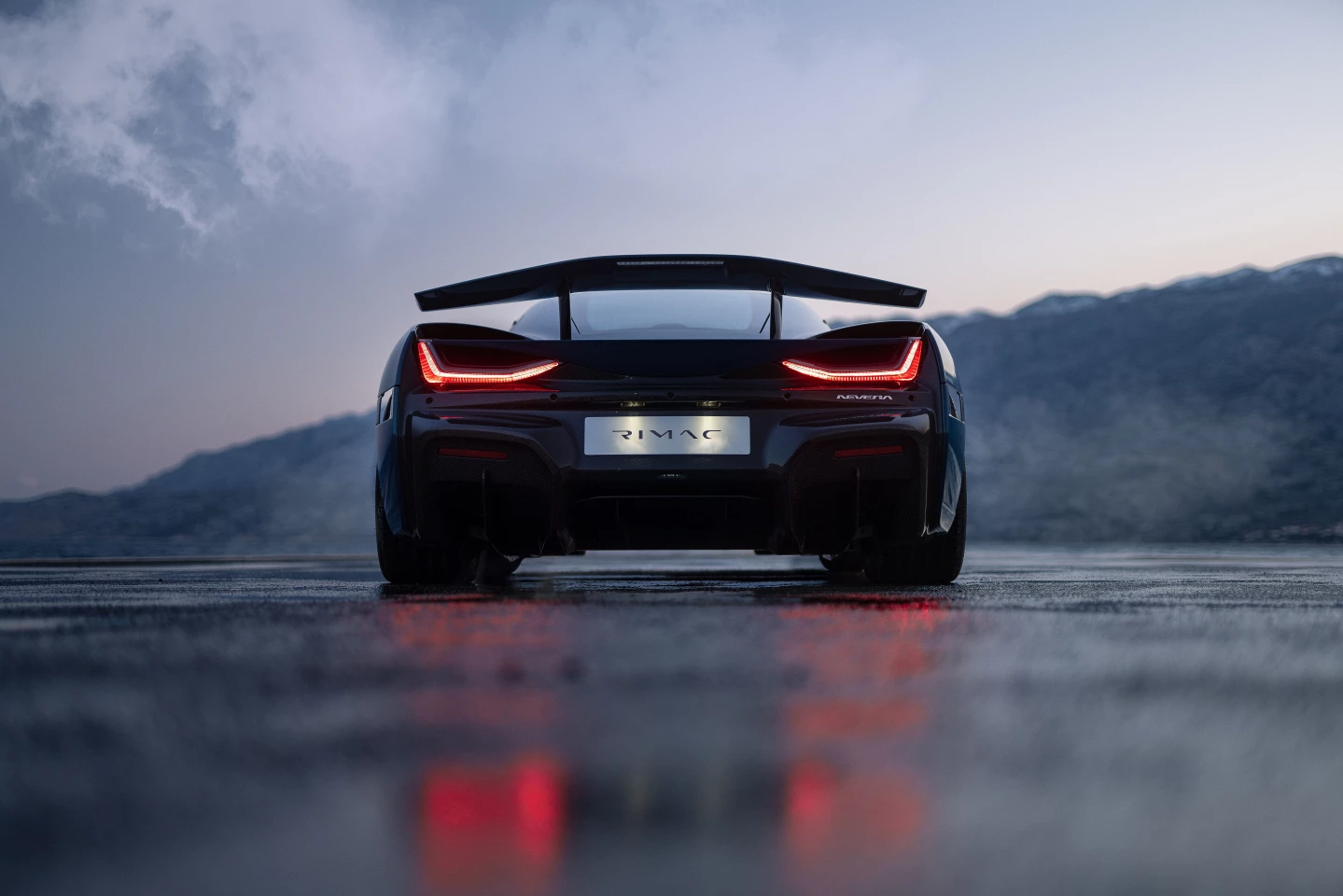
When it comes time to put the stop on the Nevera's electric fury, the electro-hydraulic braking system intelligently splits duties between the Brembo carbon-ceramic discs and regenerative motor braking. When the battery is running close to its thermal limits, the system emphasizes disc braking, whereas when the discs are running hot, it relies more on regenerative stopping power.
The Nevera is very clearly a driver's car, so instead of devoting artificial intelligence solely toward pulling the driver away from the wheel, Rimac puts it to work in more fully engaging the driver. The AI-driven Driver Coach provides performance analysis and instruction on track laps, running input from the car's 12 ultrasonic sensors, 13 cameras and six radars through the NVIDIA Pegasus operating system to provide audible and visual feedback and guidance. The Nevera has been prepped for the addition of the Driver Coach feature, which will roll out in 2022 via over-the-air updates.
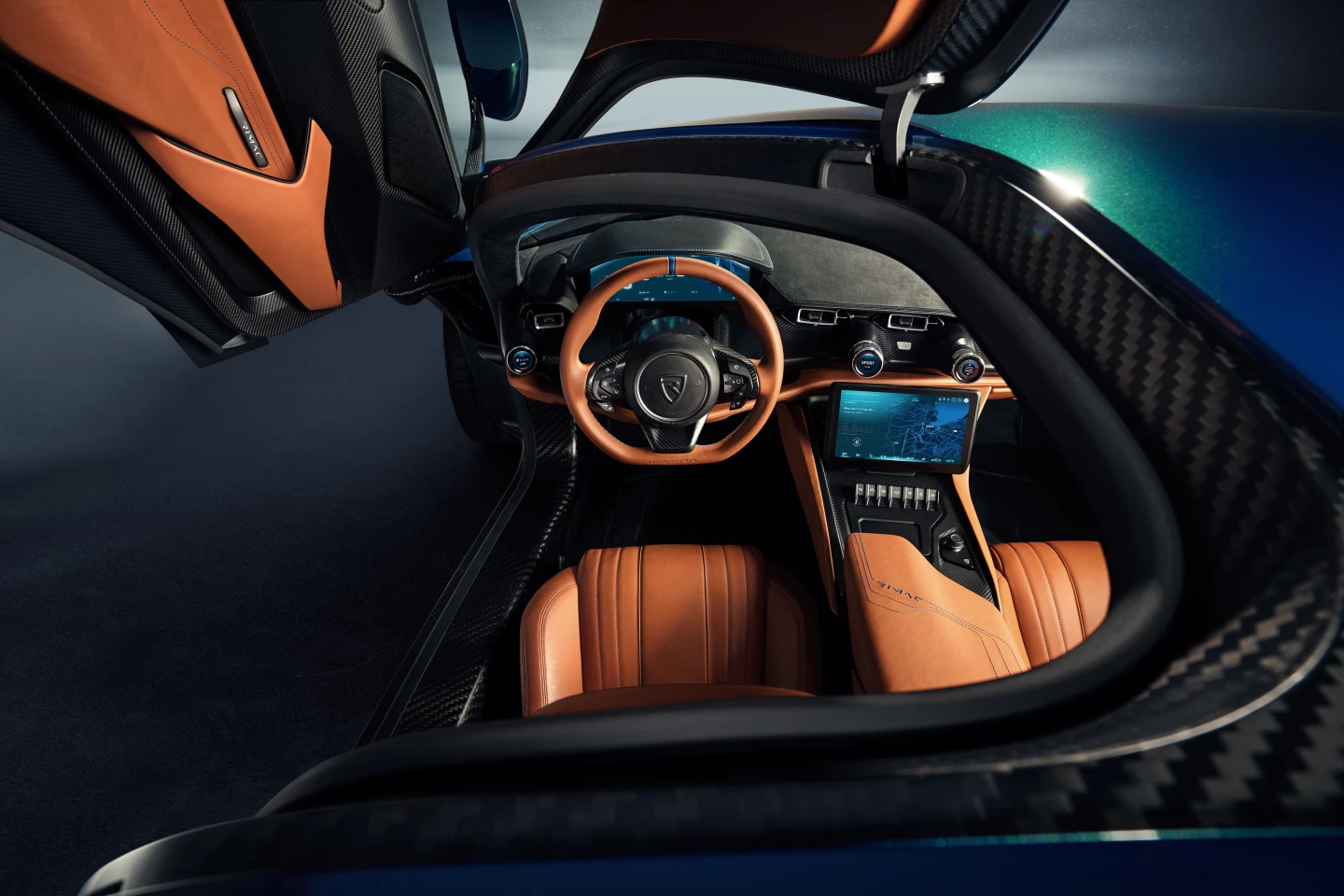
Inside, the Nevera seats two with room for luggage. The driver sits behind a digital instrument cluster that they can tailor to show as much or as little information as preferred, some of which bleeds over to the other half of the cabin via a thin passenger screen. Vehicle control gets split neatly amongst digital and physical with a combination of central touchscreen and billet aluminum switches and dials.
Beyond its gaudy acceleration and speed numbers, the Nevera is also perfectly comfortable on lazier jaunts, traveling up to 340 miles (550 km, WLTP) between charges. Lunch breaks don't have to be any longer than necessary, either, as the car's 500-kW charging capability brings the 120-kWh carbon monocoque-integrated battery from 0 to 80 percent charged in as little as 19 minutes.

Rimac will build just 150 Nevera models, each starting at an even €2 million (approx. US$2.45 million). It promises that no two cars will be alike thanks to an intensive personalization program through which each buyer will be invited to Croatia to hand-select build options. The Nevera has been globally homologated and will be sold through Rimac's 19-partner dealer network with locations in Europe, North America, Latin America, Asia and the Middle East.
Source: Rimac

